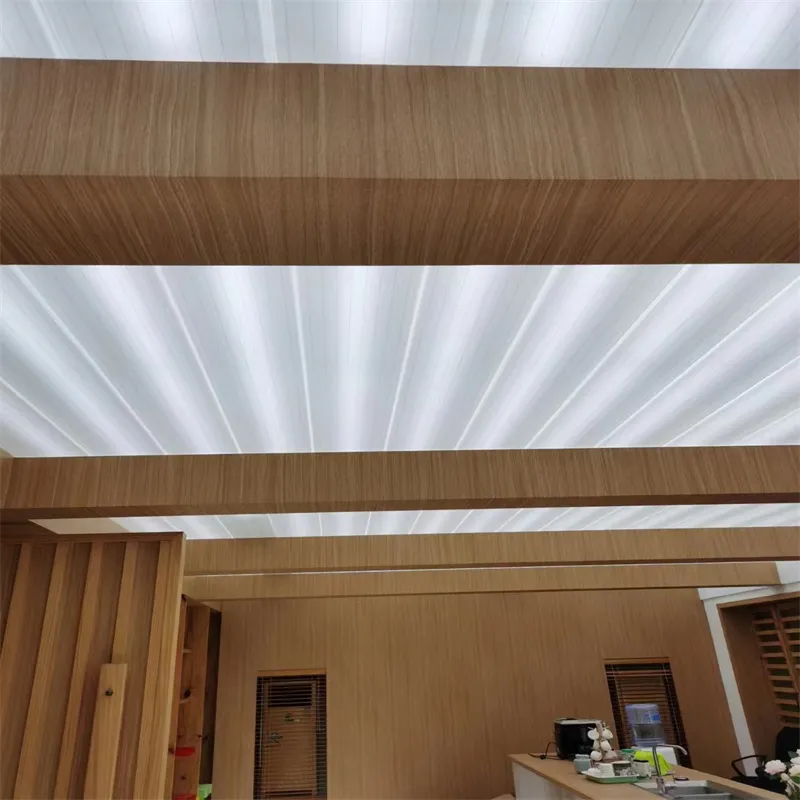Nov . 12, 2024 06:38 Back to list
float glass properties
Understanding Float Glass Properties
Float glass, a widely used form of flat glass, is produced through a process that involves floating molten glass on top of molten tin. This manufacturing technique results in a smooth, uniform surface and considerable optical clarity, making float glass the standard choice for a variety of applications in construction, automotive, and decorative fields. Understanding the properties of float glass is essential for architects, designers, and engineers who require materials that not only meet aesthetic benchmarks but also perform effectively in their intended contexts.
Composition and Structure
The composition of float glass typically includes silica sand, soda ash, and limestone, with various additives such as alumina, magnesium oxide, and iron to enhance specific properties. The principle behind its unique production method is the outcome of the glass floating on tin, which provides a smooth and even thickness, usually ranging from 3mm to 19mm. This process minimizes internal stresses and enhances the structural integrity of the glass, making it less likely to warp or distort.
Optical Clarity
One of the most notable properties of float glass is its optical clarity. Due to the controlled manufacturing process, float glass boasts excellent transparency and low levels of discoloration. This quality makes it an ideal material for window panes and skylights, where unobstructed views and natural light are desirable. The consistency in thickness also ensures that light is uniformly transmitted, reducing glare and distortion.
Thermal Properties
Float glass exhibits specific thermal properties that are crucial for building applications. Its thermal expansion coefficient is relatively low, meaning it can withstand daily temperature fluctuations without significant warping or breaking. However, it is essential to manage thermal stress, especially in larger panels or when the glass faces direct sunlight. To enhance thermal performance, float glass can be treated or combined with other materials to achieve double or triple glazing, improving insulation and energy efficiency.
Strength and Durability
float glass properties

While float glass is known for its clarity, it is also recognized for its strength and durability. The manufacturing process creates a product that is homogenous and free of bubbles, contributing to increased strength compared to other types of glass. However, it is important to note that its strength is relative. Standard float glass can be susceptible to impacts; thus, in applications where increased durability is required, tempered or laminated glass may be more appropriate. Tempered glass is heat-treated to enhance its strength, while laminated glass consists of multiple layers, providing extra safety features.
Coatings and Treatments
To enhance its performance further, float glass can undergo various coatings and treatments. Low-E (emissivity) coatings are particularly popular, as they reflect infrared light while allowing visible light to pass through. This feature significantly improves energy efficiency in buildings, reducing heating and cooling costs. Additionally, float glass can be treated with UV-blocking layers to protect interior furnishings from fading due to sun exposure.
Environmental Impact
The production of float glass does have environmental considerations, primarily in energy use and CO2 emissions during the manufacturing process. However, glass is 100% recyclable, making it a more sustainable option for construction and design. Recycling glass significantly reduces the raw material requirements and energy consumption in production, aligning with modern environmental standards and building certifications like LEED (Leadership in Energy and Environmental Design).
Applications
Float glass is used extensively across industries. In architecture, it is favored for facades, windows, and balustrades due to its aesthetic appeal and functionality. In automotive engineering, it serves as windshield material known for both strength and clarity. Beyond these, it's increasingly utilized in interior design elements such as mirrors, tabletops, and decorative partitions.
Conclusion
Float glass is an essential material celebrated for its clarity, durability, and versatility. Its properties allow it to meet a broad spectrum of demands across various industries, cementing its place as a fundamental building material. With ongoing advancements in technology and coatings, float glass continues to evolve, adapting to modern requirements and enhancing its performance in sustainability and efficiency. Understanding these properties equips professionals to make informed choices that align with their project goals while maximizing both aesthetic and functional outcomes.
-
Safety and Style with Premium Laminated Glass Solutions
NewsJun.24,2025
-
Reinvents Security with Premium Wired Glass
NewsJun.24,2025
-
Premium Float Glass Line for Modern Architecture
NewsJun.24,2025
-
Low Emissivity Glass for Energy-Efficient Architecture
NewsJun.24,2025
-
High-Performance Insulated Glass Solutions for Modern Architecture
NewsJun.24,2025
-
Elevates Interior Style with Premium Silver Mirror
NewsJun.24,2025
Related PRODUCTS














